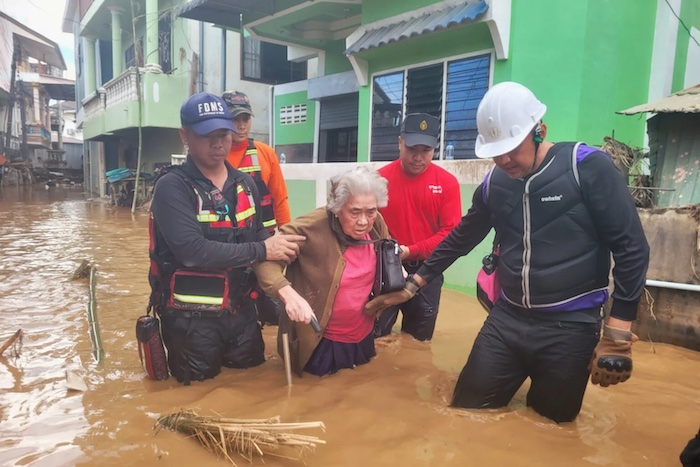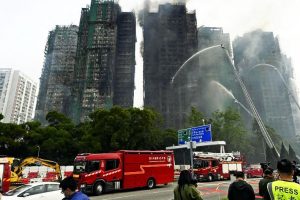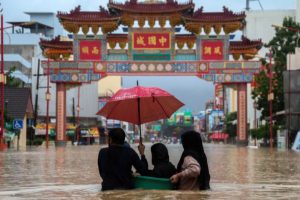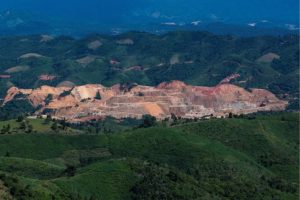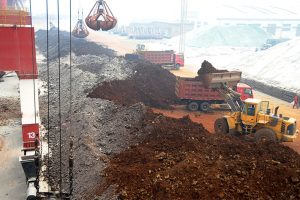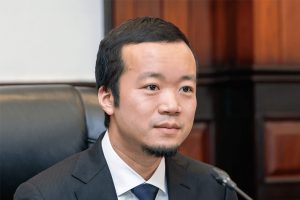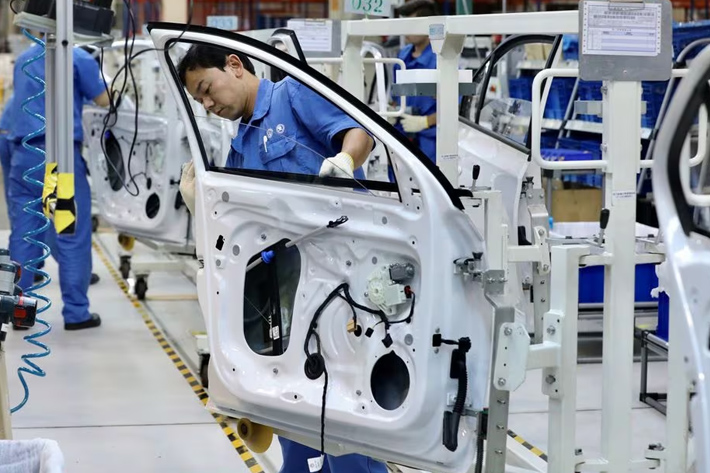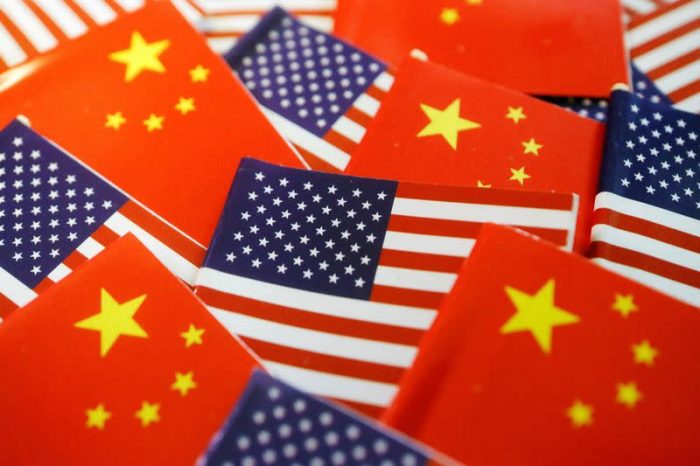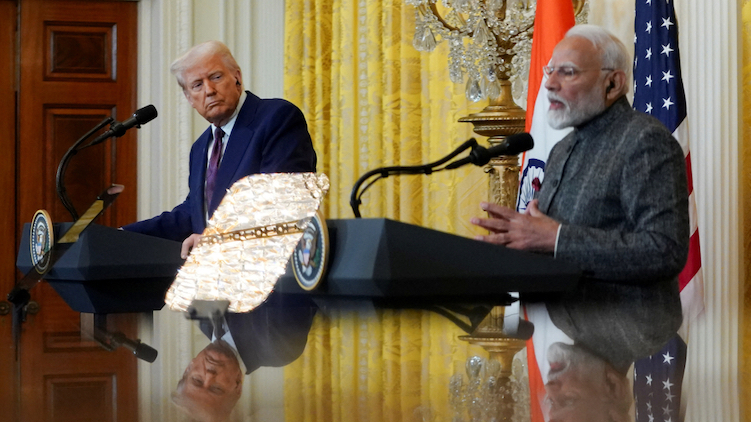Myanmar is proving to be a toxic neighbour for Thailand, particularly Thais in the far north living alongside the Mekong and three other transboundary rivers.
A mass of unregulated gold mining activity by Chinese miners on land controlled by ethnic Wa and Lahu people in Myanmar’s northeastern Shan State has been poisoning the Sai, Kok, Ruak and Mekong rivers.
Cyanide contamination has become a major problem as areas under excavation have greatly expanded – to more than 20 mines covering nearly 1,800 hectares – since the military coup in February 2021 that ousted the second Suu Kyi government.
ALSO SEE: Nvidia CEO Says US Export Curbs on AI Chips is ‘Flawed’ Policy
A recent report by the Mekong Eye said satellite imagery showed that none of the gold mining sites in an upland area around Loi Kham (‘Golden Mountain’) and rivers in eastern Shan State have proper cyanide storage or treatment facilities.
Farmers from a village in Tachilek township have told of cattle dying soon after drinking from a pond fed by the Nam Kham (‘Golden River’).
The problem stems from the widespread use of cyanide, which is sprayed on ore in a low-cost method of extracting gold. Usually, this is done in leaching ponds, but unlike gold mines in Thailand, the satellite images show no leaching ponds in these mines in northeast Myanmar.
This has raised questions on how the miners are dealing with a vast amount of toxic waste from their operations, or whether they are simply allowing these toxic compounds to leak into the surrounding environment, poisoning the soil and adjacent waterways.
More than 10 gold mines in an area called Mong Len are reported to be located above streams that feed into the Mekong, which is the third longest river in Asia.
But over a dozen other mines are found on both sides of the Sai River, for over five kilometres near Mong Kan, a village in Mong Ton township.
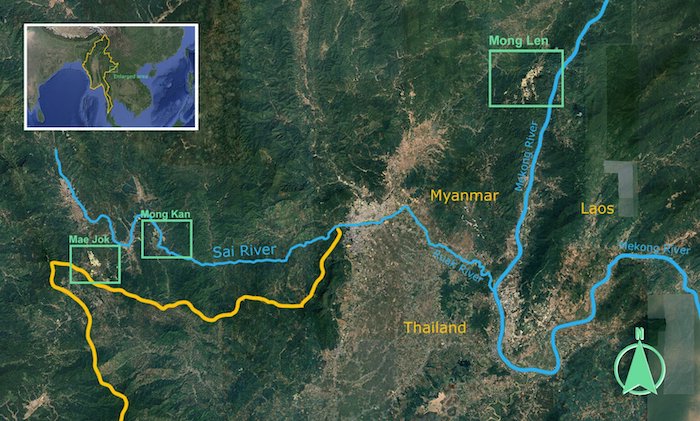
Villagers slain
Local villagers and researchers from the Shan Human Rights Foundation have known about this problem for decades. In one village, a headman who tried to stop their land being occupied was reportedly tortured and killed in 2001. And in another, opposition to the gold mines was silenced in 2015 when a protester was shot dead.
That is the second major concern about the mines – they are located in areas controlled by the United Wa State Army (UWSA), the most powerful ethnic group in Myanmar, best known for its vast production of methamphetamine and other serious drugs.
Some of the mines are on areas controlled two Lahu militias. But both groups have had ceasefire deals with the Myanmar military for decades.
That has meant the mining areas are “off limits” to journalists and independent researchers. So, satellite imagery is one of the few ways to find out what is happening there, the Mekong Eye report said.
Officials in Mae Sai in the far north of Thailand became more worried about the gold mines when flooding occurred in recent years (as shown in the top photo).
Public concern about mines in Myanmar operating without rigorous environmental impact assessments and local rivers polluted by arsenic and other toxic chemicals led to a public outcry. Residents from 13 communities submitted a petition to the Chiang Rai governor, so the government convened an emergency meeting in late April, the Bangkok Post said.
Heavy metals found in rivers
That led to Thai officials moving to do further tests on the Kok, Mekong and Sai rivers. All three were found to have unsafe levels of heavy metals, which usually comes from mining operations, the Post reported on May 21.
A senior health official said heavy metals, especially arsenic and lead, were found at dozens of locations in all three rivers in Chiang Mai and Chiang Rai provinces.
Thailand’s Deputy Prime Minister Phumtham Wechayachai said on Wednesday the government plans to build check dams on these northern rivers to filter out dangerous pollutants from mines in Myanmar.
He said the contamination came from mines in the rivers’ catchment areas that seemed to be controlled by rebel ethnic groups.
The Department of Water Resources was designing the dams, which would filter out hazardous substances that could later be disposed of, he said.
“If we do nothing, there will be problems in the future. But I confirm that there is no danger at present,” Mr Phumtham was quoted as saying.
“Local people are citizens of Thailand and important resources. The government will not let the people suffer from this hazard. It is duty-bound to protect them,” he said.
Meanwhile, Prime Minister Paetongtarn Shinawatra has assigned the Army, plus Foreign Affairs and environmental officials to negotiate with the Myanmar government to halt the discharge of wastewater into the Kok and Sai rivers, according to Thai PBS News.
- Jim Pollard
NOTE: Further text (the bottom par) and a link were added to this report on May 22, 2025.
ALSO SEE:
US Sanctions Karen Warlord, Cambodia ‘Money Laundering Group’
Chinese Builder Linked to Bangkok Tower Collapse Under Scrutiny
Cyber Scam Hubs Spread From Asia Like a Global Cancer: UN
Thousands in Limbo as Thailand Fights Scam Hubs on Two Fronts
Scam Centre’s Abduction of Chinese Actor a Blow For Thai Tourism
SE Asia Crime Networks Rely on Telegram, Crypto, UN Says
Weak ASEAN Nations ‘at Risk of Evolving Into Scamming States’
Scamming Compounds in SE Asia Stole $64 Billion in 2023: Report
High-Tech Asian Crime Wave: Cyber Scams, Casinos Loot Billions
Crime Gangs Control Some Myanmar, Laos Economic Zones: UN




